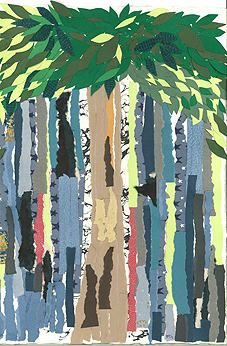The Fault Lines of Hindi and Urdu
Sanjay Kumar
The above examples attest to the fact that neither the script nor the language was a marker of one’s religious identity, and alternatively, one’s religious identity did not constrain one’s choice of either language or script. There were borrowings, mixings and interactions taking place freely. A Rahim would use Turki at home, Persian at the Court, Khari Boli/Urdu in the informal circles of the court, local vernaculars/dialects in his dealings with common people, and Braj with a mixed register in his literary writings. This phenomenon points to the existence of a syncretic and composite culture which evolved and took shape in the north during the early modern period. But, that is not to suggest that there were no contentions or conflicts, and one’s religious identity did not matter. Of course, there were notions of religious identity, but they were more localized and sectarian in nature and these religious identities were often run through other kinds of local identities. At least, there was no sense of a pan- regional or pan-Indian religious identity. This was only a later construction which was imposed on a past that was much more complex and variegated. In writing of literary histories in terms of separate single language and literary traditions, this sense of a complexly interwoven, variegated and nuanced cultural past is either lost or misrepresented through gross simplification. What is required is empirical study of literary texts of this period, much in the same fashion as Satya Mohanty suggests in his interview, to understand this complex cultural phenomenon of pattern of linguistic choice and hybridity: how in different localities/sub-regions of north India one vernacular mixed with other/s, what kinds of mixing were taking place and in what manner, and how different idioms, styles and registers, and forms were emerging. The case has not been very different even in more recent times after the formal separation between Hindi and Urdu. There is a lot in common which creative writers of both languages share despite the difference in scripts. Except for the use of Persian script, there is no reason why Rajinder Singh Bedi, Krishan Chandar or Balwant should be considered only as a part of Urdu canon of writers and not of Hindi. There is no reason why Ismat Chugtai, Sahadat Hasan Manto, Sajjad Zaheer, Nazir Akbarabadi, Faiz Ahmad Faiz, Akbar Allahabadi, Quruwatullin Haider and Kaifi Azmi should be read as part of Urdu canon and not of Hindi, as they use a language which is not heavily Persianized but has words which have long been assimilated into the common spoken idiom. Similarly, there is no reason why Rahi Masoom Raza and Abdul Bismillah should be considered as part of Hindi canon and not of Urdu. Going by the logic of cultural chauvinists, their writings seem to be closer to Islam/Urdu in their cultural orientation. The list is only indicative and not exhaustive. The case of Premchand is quite peculiar as he is considered as belonging to both canons, Urdu and Hindi, but on the basis of his Urdu and Hindi writings separately. So, half of Premchand belongs to the Urdu canon and the other half to the Hindi. The carving of Premchand’s body of works into two separate canons is symbolic of the division of the body politic of the nation. Hindi and Urdu writers belonging to the Progressive Writer’s Movement (most of the writers mentioned above belong to this movement), despite the similarities in their concerns and choice of themes and subject matter and their treatment, are studied separately. Modernism in Hindi literature is studied in reference to European modernism but never in reference to modernism in Urdu or other vernacular literatures. Ghazal, once a quintessential Persian/Urdu form, is now practiced in Hindi as well, but they are never studied together. The list of things which we miss out on because of our myopic approach is practically endless. Even now both the languages at the spoken level continue to be mutually intelligible and even similar so much so that at times it is difficult to tell one from the other. At the level of popular culture, especially music and films, they still share a lot in common. Qawali continues to be extremely popular across the border, so are the Bollywood films which are appreciated and enjoyed as much by audiences in India as in Pakistan. It is said that late Zia-ul-Haq, during whose regime there was a revival of Islamic agenda in Pakistan, used to enjoy Bollywood films in the privacy of his presidential quarters. Pages 1 2 3 4 5 6 7 8 |
Essays in this Forum
Rethinking the Global South
by Mukoma Wa Ngugi From Indian Literature to World Literature: A Conversation with Satya P. Mohanty by Rashmi Dube Bhatnagar and Rajender Kaur Asia in My Life by Ngugi wa Thiong'o The Global South and Cultural Struggles: On the Afro-Asian People’s Solidarity Organization by Duncan Mceachern Yoon The Fault Lines of Hindi and Urdu by Sanjay Kumar Reframing Colonialism and Modernity: An Endeavour through Sociology and Literature by Gurminder K. Bhambra Varieties of Cultural Chauvinism and the Relevance of Comparative Studies by Tilottoma Misra Literature to Combat Cultural Chauvinism: A Response by Shivani Jha Is There an Indian Way of Thinking about Comparative Literature? by E. V. Ramakrishnan Modernity and Public Sphere in Vernacular by Purushottam Agrawal West Indian Writers and Cultural Chauvinism by Jerome Teelucksingh Oral Knowledge in Berber Women’s Expressions of the Sacred by Fatima Sadiki |
